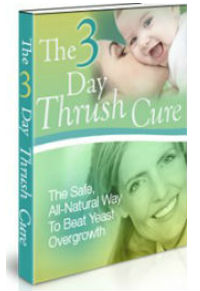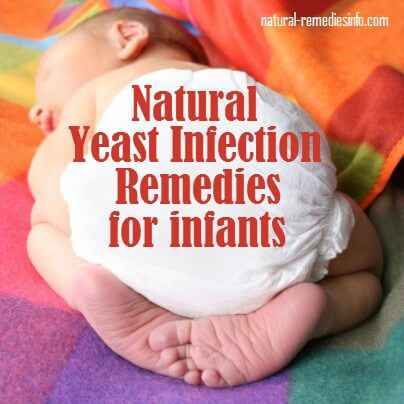Adults are not the only ones that may get a yeast infection. Infants can also acquire different types of yeast infection if they are at risk. Of course when an infant has any type of infection or any kind of medical condition for that matter, people are usually more alarmed because they are babies. Fact of the matter is, one-fourth to one-half of babies may get a infection and 15-50% of these are due to yeast.
When your baby suffers any symptoms that are unusual it is always BEST to contact your pediatrician for proper diagnosis and accurate and safe treatment. I want to go into detail about different forms of yeast infection that infants may obtain, so continue to read along.
It is crucial to understand what exactly a yeast infection is, the symptoms that may come along with it and other very vital information regarding it. Now let us proceed with the questions that you may be curious about.
What is an infant yeast infection and how can babies get it?
Like the adult type of skin yeast infection, infant yeast infections can also be caused by the same type of yeast which is candida albicans. There are various ways that an infant can have a yeast infection and they are:
- For diaper yeast infections, since infants have fragile skin, their urine and stool (poop) may cause an irritation due to the acidity of both. Adding to this is their baby bottoms being chronically coupled up in a warm environment under their diapers.
- Infants who are allergic to a certain type of diaper material could also contribute to this infection
- A mother who has a vaginal yeast infection can also transmit it to her baby if the baby is delivered through her vagina
- Kissing, rubbing against, nursing and bathing can pass yeast from mom to baby also
- Bottles and pacifiers may also be a source of yeast infection
What can you see on your baby if they have a yeast infection:

- Oral yeast infection
- Thick and white patches that may be seen around the infant’s gums, inner cheeks, roof of the mouth and tongue
- Infant may be fussy and have trouble feeding because of the pain being felt
- Yeast diaper infection
- Shiny red, pustule-like bumps may form around the groin area or skin folds (may not be liquid-filled)
- Pain may also be felt when touched so infant may be squirming when you are changing their diaper
How do pediatricians diagnose a yeast infection in infants?
The first signs of these symptoms should alert you and should urge you to bring your baby to the doctor. The doctor usually knows what infant yeast infections look like because it is quite common. They may also ask a few questions about your infant to properly put together the puzzle pieces of a yeast infection. Your doctor will give proper treatment for it to clear up right away.
Natural Remedies for relieving symptoms or treating an infant yeast infection:
- Consider your baby’s diet. If your baby is able to eat solids, ask yourself if they eat foods that are high in sugar and carbs. Both those kinds of food may further worsen the yeast infection because yeast loves to eat sugar.
- Coconut oil. Yes, coconut oil. The same kind you use while you cook. Using this natural treatment is safe and can also leave your baby’s body smelling good. It is well known to killing yeast. If your baby is old enough to eat solids, you can mix a little coconut oil with some food. Remember to consider their diet!
- Garlic. Like my other articles about yeast infection, garlic is always on the list of natural remedies. Besides killing yeast, it is also great for the immune system. Your young one might not be too fond of eating raw garlic like adults, but you can try sprinkling some minced fresh garlic in their meals to help.
- Yogurt. This is also another favorite when it comes to killing yeast. Unsweetened yogurt is always your best bet because we want to prevent intake of too much sugar since yeast loves sugar. Take some unsweetened yogurt and spread it over your baby’s diaper area.
- Air it out. Don’t leave your baby’s diaper on for too long because even their tush needs to breathe. Airing out any rash is always a smart thing to do.
- Wash their undies the right way. If your baby uses cloth diapers or your young one is already using underwear, you can wash them in vinegar and hot water a number of times to kill the yeast on them.
- Treat their tush right.
- Check on your baby’s diaper often to prevent their diaper area from being exposed to the acidity of their urine and stool.
- Use plain water when washing their private zone and don’t rub to dry, pat it to avoid irritation.
- If you use wipes, make sure that they are the mild ones. Don’t use the wipes that contain a strong fragrance or alcohol. Better yet, use a baby cloth that is dipped in warm water to clean
Something I’d like to add to this article… call your doctor when one or more of the following occurs:
- You start to notice the rash becoming worse and treatment isn’t working for more than two or three days
- Your baby presents fever and seems tired and sluggish
- There are fluid-filled pustules forming with crusted areas. This is a sign that the infection is bacterial and will need to start antibiotics
If your infant has contracted a yeast infection, you don’t have to worry. Like I mentioned above, if you start seeing signs of yeast infection in your child do contact their doctor as soon possible so the condition does not worsen. You may ask the pediatrician about the natural remedies mentioned above and you may start using them as soon as they give the “GO” signal.
It may be hard to believe another article that talks about infant yeast infections because there are so many out there on the internet. We all want facts, the real deal and success stories of the natural treatments actually working out for real people. Well if you want proof… click on the image below and learn more about the facts about this type of infection and the most effective yeast infection solutions that you have been searching for.

